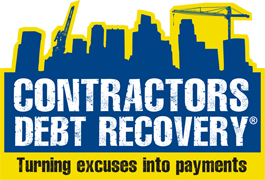The Secret of Variations
All right. Anthony Igra again from Contractors Debt Recovery. Welcome. Today, we’re going to talk about variations the no. 1 hottest topic.
How do you deal with variations?
Okay. The most important aspect of variations is to know that it is a variation. And that comes from knowing your scope. What is in your scope and what is additional. If it’s additional, it’s a variation. If your scope is being reduced, that’s also a variation sometimes known as a negative variation. But let’s stick to the positive ones cause that’s the one everyone fights about.
You must know your scope intimately to know what is going to be additional to scope. The biggest argument in Security of Payment from clients who don’t want to pay you is it’s not a variation it’s part of your scope works. And then there will be an argument how the scope was defined. That’s a whole other talk by the way. So the important thing to know is that this is definitely additional work.
The next thing you need to know going on from there is how are variations requested. How will your client request that you do or price a variation?
That needs to be defined in the contract or otherwise reasonably agreed how that is going to happen. All right. Now once we know how are variations are requested from your client, how are they approved? How is your client going to approve. Is it going to be sign of? Is it going to be oral? Is there a particular form need to be filled out or is it by email.
How are these things going to be approved?
So that needs to be agreed between the parties. And from there how are your variations valued. So who decides how much? Is the value decided by the quote that your client accepts. Is it reasonable value? Is it the superintendent’s opinion of what the value is. Again, approval is part of the process but how your variations are valued is really the pointy end of the stick cause that dictates what you get paid.
So you need to understand these things are going to be valued. If you follow all those points through there should be little argument about variations. But of course we don’t, we just get told what to do and we’ll sort of it later and you’re going to all this extra work. So you don’t want to be doing that anymore. So to simply summarize know that it is a variation. So know that it is additional scope and understand your scope.
Secondly know how variations are requested.
Thirdly, know how variations are approved.
What is the approval process and finally know and agree how variations are to be valued. If you can get your head around those things and build it into your processes with your client, the argument of the variation should greatly reduce.
Make it real in your business and I’ll see you next time.
